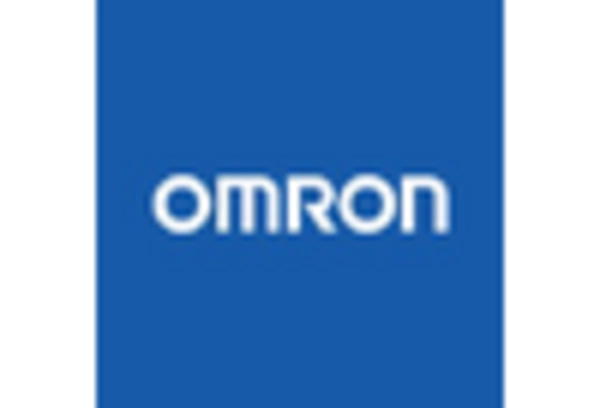Growing Focus on Preventive Healthcare
The m health-device market is increasingly aligned with the growing focus on preventive healthcare. As healthcare systems shift from reactive to proactive approaches, there is a rising emphasis on early detection and management of health issues. This paradigm shift is reflected in the increasing adoption of health monitoring devices that empower individuals to take charge of their health. Data indicates that preventive health measures can reduce healthcare costs by up to 30%. Consequently, the m health-device market is likely to thrive as consumers and healthcare providers prioritize preventive strategies.
Rising Health Awareness Among Consumers
Consumer health awareness is on the rise, significantly impacting the m health-device market. With access to information through various channels, individuals are becoming more informed about health issues and the importance of monitoring their well-being. Surveys indicate that nearly 70% of US consumers are actively seeking tools to help them manage their health better. This heightened awareness is driving demand for m health devices that provide real-time health data and insights. As a result, the m health-device market is poised for growth as consumers increasingly prioritize their health and wellness.
Advancements in Mobile Health Applications
Technological advancements in mobile health applications are significantly influencing the m health-device market. The proliferation of smartphones and tablets has facilitated the development of sophisticated health apps that offer features such as medication reminders, fitness tracking, and telemedicine consultations. As of November 2025, it is estimated that over 50% of US adults utilize at least one health-related app, indicating a strong consumer preference for mobile health solutions. This trend suggests that the m health-device market will continue to expand as developers innovate and enhance app functionalities to meet user needs.
Increasing Demand for Remote Patient Monitoring
The m health-device market is experiencing a notable surge in demand for remote patient monitoring solutions. This trend is driven by the growing need for continuous health tracking, particularly among chronic disease patients. According to recent data, approximately 60% of healthcare providers in the US are adopting remote monitoring technologies to enhance patient care. This shift not only improves patient outcomes but also reduces hospital readmissions, which can be costly. The m health-device market is thus positioned to benefit from this increasing demand, as more patients seek convenient and effective ways to manage their health from home.
Integration of Artificial Intelligence in Health Devices
The integration of artificial intelligence (AI) into health devices is transforming the m health-device market. AI technologies enhance the functionality of health devices by enabling predictive analytics, personalized health recommendations, and improved user experiences. As of November 2025, it is projected that AI-driven health devices will account for a substantial share of the market, with an expected growth rate of 25% annually. This trend indicates that the m health-device market is likely to evolve rapidly, as AI continues to play a pivotal role in shaping the future of health monitoring and management.
















